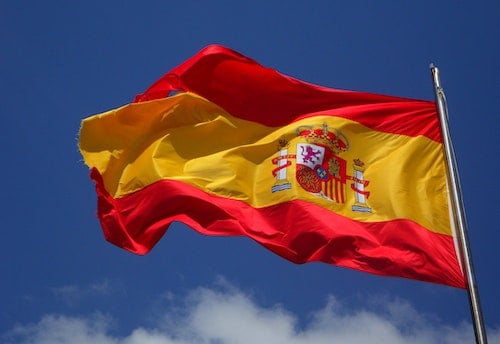Mexican Spanish vs Spanish from Spain: Differences in Grammar, Vocabulary and Pronunciation
Is it true that Mexican Spanish vs Spanish from Spain are THAT different?
Well, of course they are! Doesn’t the same happen with different English dialects? “Fancy a cuppa, mate?” “This is bloody brilliant”. “That’s rubbish!” When you talk to an English person, many phrases remind you just how different British and American English can be.
With Spanish, the same thing happens. So, if you’ve just spent lots of money on an intensive course of Spanish taught by a native instructor from Madrid, you may be a bit confused once you arrive in Mexico. What do phrases like órale, chido, or güey even mean? Was I that distracted when the teacher got to those? And why do people keep saying “ustedes” instead of “vosotros”?
→Sign Up Now: Free Trial Spanish Lesson With a Native Speaker Teacher!←
In this article, we’ll cover the main differences between Mexican Spanish vs Spanish from Spain so you won’t get lost in translation the next time you visit Acapulco or Madrid.
Table of Contents
Grammar: Vosotros, Ustedes and the Plural “You”
Differences in vocabulary
Differences in slang expressions
The Pronunciation of Z and C
Grammar: Vosotros, Ustedes and the Plural “You”
In Spain, there are two forms for the plural “you”: ustedes (for special occasions which call for a very formal register), and vosotros, which is the most common option. In Mexico, speakers do things very differently. Ustedes, a very formal pronoun in Spain, is the universal plural “you” form across the country, while vosotros is nowhere to be seen (or heard)!
But that’s not the only difference. The verb conjugation also changes with these two different forms of “you”. When attached to the pronoun “vosotros”, verbs have their own special inflection. Let’s exemplify this with the verbs correr (run), lavar (wash), and beber (drink):
Yo (I): corro, lavo, bebo
Tú (You): corres, lavas, bebes
Él / Ella (He / She): corre, lava, bebe
Nosotros (We): corremos, lavamos, bebemos
Vosotros (Pl. You) corréis, laváis, bebéis
Ellos (They): corren, lavan, beben.
Vosotros, as you can see, has its own set of verb conjugations, shared with none of the other pronouns! In Mexican Spanish, things are a bit simpler. If you want to know how to conjugate a verb por “ustedes”, all you have to do is look at how the same verb is conjugated for the plural third person; i.e., for ellos (they):
Ustedes: corren, lavan, beben.

That’s right! In Mexican Spanish, the plural form for the second and third persons is exactly the same! Ellos comen, ustedes comen (eat). Ellos estudian, ustedes estudian (study). Much simpler than in Castillian Spanish!
Differences in vocabulary
Flat or apartment? Biscuit or cookie? Sometimes, two different words can refer to the same object depending on what country you’re in. In the Spanish-speaking world, it’s no different.
As you might expect, some of these differences are due to the influence of local Indigenous languages on Spanish. In other cases, the difference may come from a loanword from English (or another language) that hasn’t made its way to Spain.
Here are some examples of differences in vocabulary between Mexican Spanish and Spain Spanish:
Auto (Mexico) vs coche (Spain)
Both words mean “car”, but “auto” is more common in Mexico. Auto, the Mexican term, is an abbreviation of “automovile”, while “coche” is an adaptation of the Hungarian word kocs, which means “carriage”.
Apartamento (Mexico) vs piso (Spain)
If you want to say the word “apartment” (or flat!), you should use the word “apartamento” if you are in Mexico, and “piso” if you are in Spain.
Computadora (Mexico) vs ordenador (Spain)
These both mean “computer”, but “computadora”, which derives from the English term, is more popular in Mexico, while “ordenador” is more popular in Spain, where speakers usually avoid foreign terms.
Celular (Mexico) vs móvil (Spain)
Both of these words mean “cell phone”. In Mexico, you’re more likely to hear “celular”, an abbreviation of the term teléfono celular. In Spain, on the other hand, “móvil” is used more often.
Bizcocho (Mexico) vs. galleta (Spain)
These both mean “cookie”, but in Mexico, the more common word is “bizcocho”. This term comes from the Indigenous Nahuatl language, and is also used in other Spanish-speaking countries in Central America.
Elote (Mexico) vs. maíz (Spain)
If you want to say “corn”, you should know that “elote” (from the Náhuatl word élotl) is more popular in Mexico, while “maíz” is the word you’re more likely to hear in Spain.
Güero (Mexico) vs. rubio (Spain)
Güero and rubio both mean “blonde”, but “güero” is more frequent in Mexico, while “rubio” is more common in Spain. Oh, and if you’re wondering how on Earth you’re supposed to pronounce that ü, all you need to know is that the two dots only indicate that the vowel is not silent. We don’t say /gero/, we say /gwero/.
Cheque (Mexico) vs giro (Spain)
In Mexico, “cheque” is the word you would use for a “check”. This word comes from English. In Spain, on the other hand, the more common term is “giro”, which can also refer to a “wire transfer”.
Differences in slang expressions
In any language, there are going to be informal terms that are used only in certain regions or among certain groups of people. This is especially true for slang or idiomatic expressions.
Here are some examples of differences in slang between Mexican Spanish and Spain Spanish:
Echar una chela (Mexico) vs tomar unas cañas (Spain)
Both of these expressions mean “to have a beer”, so, where does this difference come from? In Spain, the “cane” refers to the tube through which the beer passes from the barrel to the tap. Being a vertical tube, it is called a caña (“pipe”) by association. In Mexico, on the other hand, people use the word “chela”, a term of Mayan origin that originally meant “blonde”, to refer to the traditional color of beer.
Chingar (Mexico) vs Joder (Spain)
These both mean “to screw up”. You can use these terms when you’ve made a mistake, had a small accident, or just ruined a special moment. It is also used to talk about sexual intercourse. Whatever meaning you want to convey, you should be careful: both these expressions are vulgar, no matter where you are!
Estar chido (Mexico) vs estar guay (Spain)
Whether you are talking about a song or your Spanish-speaking significant other, you can use both of these phrases to mean that someone or something is cool. So, why are the two terms different?

The word “chido”, according to the Royal Academy of the Spanish Language, refers to something or someone that is interesting or that seems good or attractive. Some believe that the word comes from “chirote”, an originally Costa Rican word that denotes someone who is restless but also wonderful. Guay, the Spanish equivalent was, in principle, an exclamation that had the value of a lament or a threat, especially in poetry. However, at the end of the 20th century –and due in part to its phonetic resemblance– its meaning started to coincide with that of English word gay (as in “happy”, not as in same-sex oriented), adding “cool” or “attractive” to its meaning in recent years.
Chingón (Mexico) vs macarra (Spain): Both these words refer to a “tough guy”. The term “chingón”, which is more popular in Mexico, comes from ancient Indo-Aryan (from which Sanskrit would later be born) where cinghāra once meant “noise” or “yell”. Macarra, on the other hand, comes from the French term maquereau, whose nearest equivalent in English is the word “ruffian”.
Mexican Spanish vs Spanish from Spain: The Pronunciation of Z and C
Even if you don’t speak a word of Spanish, I’m sure that, after hearing two recordings of Mexican Spanish vs Spain Spanish, you would be able to tell where the people from the next clip are from.
This is mostly due to the way people from both countries pronounce the letters Z and C.
In Mexico, the letter “z” is always /s/ in pronunciation, while in Spain is realized as a /th/ (the one in thought) in most regions. The same happens with soft C, i.e., the C before letters E and I: In Mexican Spanish, the sound of soft C is identical to that of an S, while In Spain, it has the sound of a /th/.
As a result, the same set of words will have very different pronunciations in both countries:
Cerveza (beer) – Mexican Spanish vs Spanish from Spain: /servesa/; /thervetha/
Zorro (fox) – Mexican Spanish vs Spanish from Spain: /sorro/; /thorro/
Cereza (cherry) – Mexican Spanish vs Spanish from Spain: /seresa/; /theretha/
If you’ve ever wondered what gives Spain Spanish its silky, airy quality, now you know: lots of /th/ consonants where other varieties of Spanish would produce an S!
Mexican Spanish vs Spanish from Spain: Which one will you learn today?
As you can see, there are many differences between Mexican Spanish and Spain Spanish, from grammar to vocabulary, slang expressions, and pronunciation. While some of these differences might seem small, they can add up to create a language that sounds very different from one country to the next. So, whether you’re planning a trip to Guadalajara or Barcelona, or just need to send an important email in Spanish, it’s important to be aware of the main differences between these two varieties.
So, why not practice your conversational skills with a native teacher of either dialect?
→Sign Up Now: Free Trial Spanish Lesson With a Native Speaker Teacher!←
At Language Trainers, we offer Spanish courses tailored specifically to your needs, whether you’re a beginner or an advanced learner. All you have to do is tell us what variety of Spanish you would like to practice and we’ll match you with a qualified native teacher for a trial lesson.
Contact us today and get started on your language journey!
